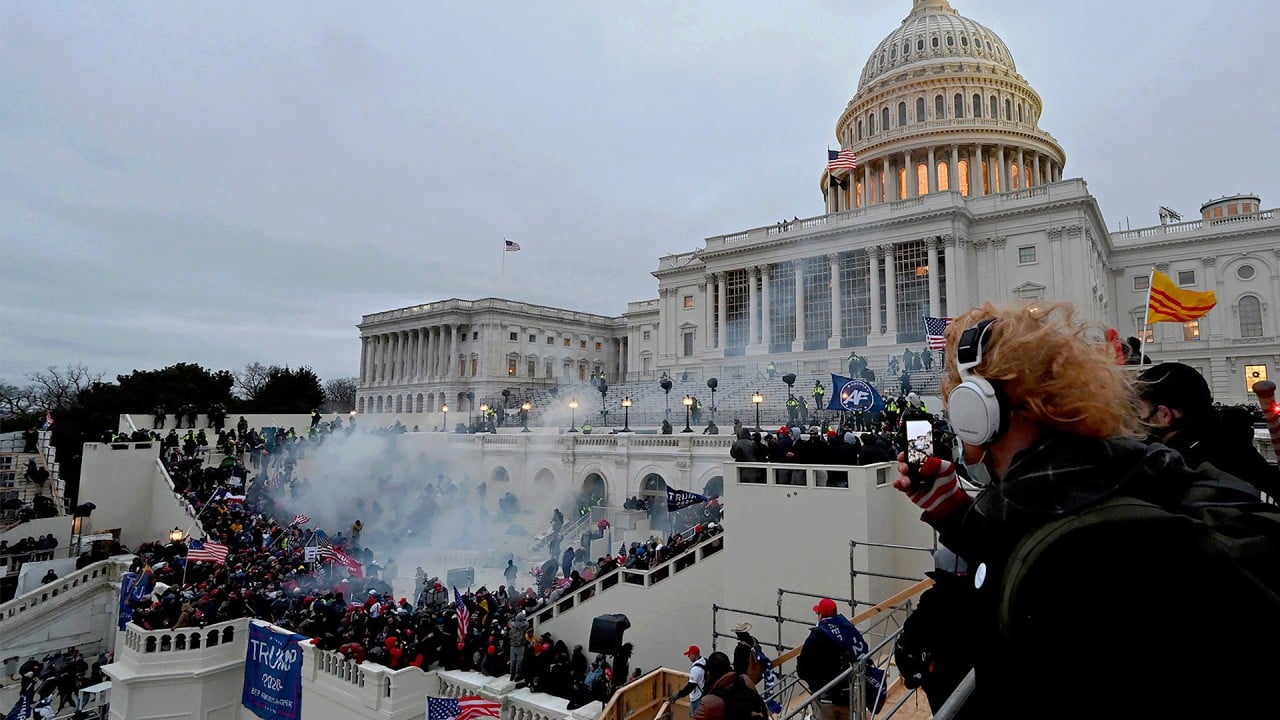
Time is running out for Joe Biden to knit fraying US democracy back together
- US president faces a tall task in generating unity in the face of raw partisan animosity and Republican voters convinced his presidency is illegitimate
- His State of the Union address is a chance to establish stronger governing themes for his presidency and find common ground with Republicans
It is perhaps not surprising that those on the other side of the aisle make this claim. However, concerns are growing well beyond the political class.
Three retired US military generals recently raised the alarm over their fears “about the aftermath of the 2024 presidential election and the potential for lethal chaos inside our military”, adding that “we are chilled to our bones at the thought of a coup succeeding next time”.
Incredible as Homer-Dixon’s assertion might appear, he rightly highlights that the US has an increasingly fragile democratic system that is not immune to collapse from populist onslaught.
To his credit, Biden appears to recognise the deeper historical roots of Trump’s success in tapping into popular anger with the political establishment. This stems, especially, from discontented white working-class voters who are angry on multiple fronts, including with significant increases in income inequality since 1980.
Before 2016, these inequalities had limited political consequences, yet income and status differences are potentially significant sources of political change.
Trump demonstrated in 2016, as well as in 2020, that they can be mobilised by insurgent politicians operating either within parties or outside them, as they have been in the past. For instance, Andrew Jackson mobilised such forces in the 1830s, earning him the nickname “King Mob”.
Why Joe Biden is just the president to unite a divided US
The raw partisan animosity facing Biden means his success or failure in the White House will depend in large part on the skill with which he configures his administration and projects the remaining moral authority emanating from his election victory.
To make the presidency work best for Biden and for the country, he will have to show that he knows how to use these powers even better than in 2021. The first opportunity this year for giving expression to such engagement and reconciliation will come in his State of the Union address in the coming weeks.
What Biden needs to do in this upcoming speech is begin to establish stronger governing themes for his presidency, including striving for a greater consensus and the healing of frayed relations, which command popular understanding and support. This will afford him latitude for political development and manoeuvre.
To maximise his prospects of success, Biden also needs to simultaneously cultivate stronger relationships with more Republican legislators in Congress. This will be a tough challenge, but he should do his utmost to bridge the divide.
Despite the formidable political problems Biden now faces, in suitably skilled hands, the presidency can still offer the potential for national renewal and unity at troubled times such as these.
This will be a monumental test for him and his administration, given the international challenges he is also facing. He will be most effective if he and his congressional colleagues can avoid overreach and work closely to forge the nucleus of a governing agenda that brings the country together, rather than further apart as under his predecessor.
Andrew Hammond is an associate at LSE IDEAS at the London School of Economics


